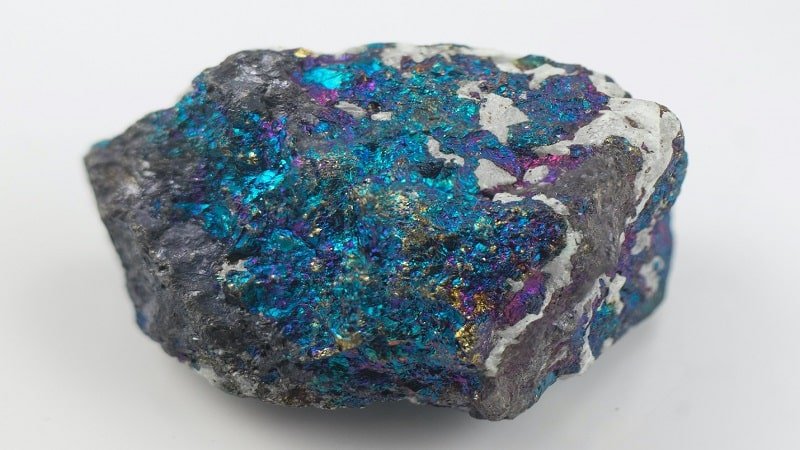Where is Turquoise Mined?

Where is Turquoise Mined?
The teal-colored gemstone, which had derived the name ‘turquoise’, is a stone credited to be discovered by ancient Egyptians. Its bright blue appearance is what makes it such a popular gemstone for use in eastern jewelry designs.
Turquoise adds an ornamental look to any jewelry, used more in Asian and Middle Eastern countries despite being mined in the United States of America and other western countries. The gemstone carries a lot of symbolism as it is used in mosques and clothing to add that tinge of bright blue to the look.
For this reason, looking at the sources of mining turquoise is very important because turquoise is easily replicable. In fact, the ancient Egyptians who discovered this teal-colored gemstone were also the first ones to create its replica. Since its discovery, the existence of its replica has caused demand to shift away from the authentic gemstone to the artificial one because of its low price. As such, very few individuals would understand the value of knowing where turquoise is mined from.
The Mining Sources of Real Turquoise
Since technology has become so easy and advanced, it becomes nearly impossible to distinguish between a real turquoise stone and an artificial one. But, the way turquoise occurs and is formed determines the geographical regions where its mines can be found.
Since turquoise is a hydrated phosphate of copper and aluminium, it is formed when hydrothermal deposits of copper sulfides are made. These copper sulfides would mix in with rainwater or snow. This means that places that received some rain or snow or rivers are more likely to have deposits of turquoise.
Hence, turquoise is mined in countries like Egypt, Iran, and the United States of America. These are the main sources, but the gemstone has also been discovered in small quantities in other countries such as Bulgaria, China, Afghanistan, India, Australia, and parts of Central Asia.
What this tells us is that Asia is emerging as a great source for mining turquoise.
Egypt
Turquoise in Egypt was discovered about 7,500 years ago, which is also the first time the gemstone came into contact with human civilization. The two most important mines in Egypt are found in the Sinai Peninsula. This entire peninsula was known as the ‘Country of Turquoise’ because it was rich in mines. The two mines found here are Wadi Maghara and Serabit l-Khadim; the first mines credited were the ancient Egyptians who discovered turquoise. However, the peninsula in total has six mines that are located on the southwest coast.
The turquoise in Sinai is found in sandstone that was previously overlain by basalt. But there are some copper and iron deposits present in the area as well. The Sinai turquoise is different from the rest of the world because it has a green tinge to it, and it appears translucent with a blue disc when looked under a magnifying lens.
Iran
The country has been one of the major sources of mining the teal-colored gemstone. Within the Semnan province, the Damghan mine is processed for turquoise in the Damghan county of Iran. There are also mines of turquoise located in the Kerman province. Iranians initially named the gemstone as ‘perozah’, which meant ‘victory’. This was an important part of Iranian architecture because it adorned their buildings, palaces, and mosques.
In Iran, mining is done excessively because the stone is considered as a heaven on earth. The turquoise stone found in this country is blue naturally, and it turns into a green shade due to low water content when exposed to high heat. The turquoise here is found between the layers of limonite, sandstone, and the collection of broken rocks known as scree.
After all, the country is famous for its dependence on teal-colored gemstones for ages.
The United States of America
The country’s southwest region is a great source of turquoise mines due to its desert climate, a common geographical feature in the previous two locations. These include areas like California, New Mexico, Nevada, Colorado, and Arizona. Within these areas, New Mexico is considered to house the oldest mines in the country for turquoise. The state was held as the largest producer for this gemstone, and for that reason, it has been exhausted, and mining operations have shut down here.
You would be surprised to know that Columbian Native Americans had used tools to excavate turquoise from mines found in California and New Mexico. Like New Mexico, Californian mines are also near to depletion, which is why only one mine is used for commercial mining today.
Today Arizona is the American state that produces the highest and most valuable gem-quality turquoise in the country. It is even famous for its mines that housed unique colors, such as the Sleeping Beauty Mine in the Globe, a city in Arizona. The mining operations here have also been shut down since 2012. The reason behind this was a shift towards copper due to a rise in world prices and not necessarily a depletion of the teal-colored gemstone.
The other mine in Arizona is the Kingman Mine, which has operated for both turquoise and copper deposit extraction. The other mines in this state are known as the Blue Bird Mine, Ithaca Peak, and the Castle Dome, which are currently not operating due to high costs.
Our Final Thoughts
The international price of turquoise is fairly less than other gemstones owing to the presence of close replicas. This is why many mines with potential are not operated upon because the costs of excavating the turquoise from those mines are higher than the price it could sell—making it not a profitable opportunity for mining companies.